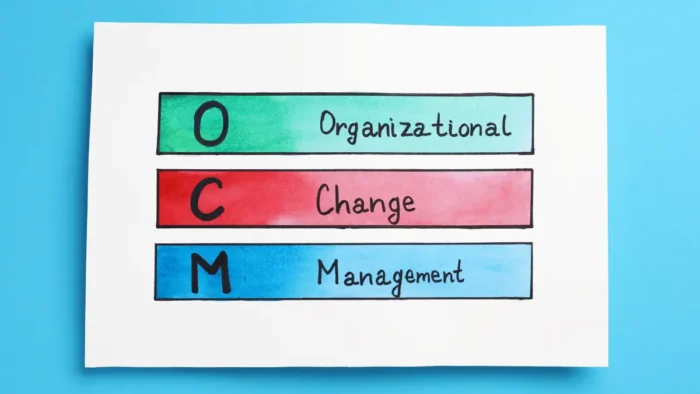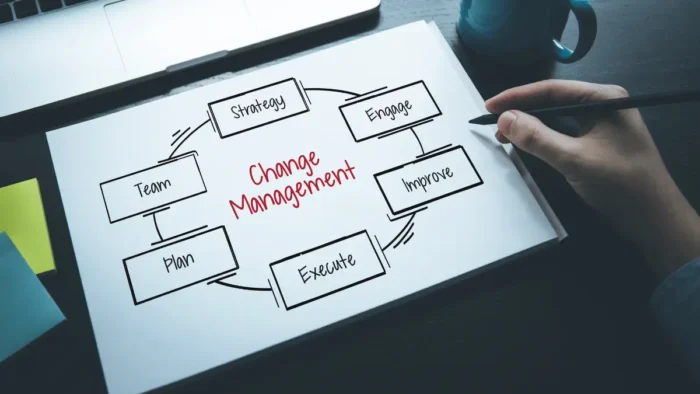The organizational change management process is something that can bring high-level improvements to your business. This process will need to be the most constant process in your business life if you want to succeed as a manager or business owner.
Change is the only constant. If you create and implement a system to help you quickly implement an organizational change. The probability that your business will fail will be very low.
Here, I will discuss steps to implement a process that will help you build your own change management skills, lead to success, and transform how your organization perceives and executes change.
Why You Need Organizational Change Management Process in Place
Why is this process so vital for your organization’s success?
The answer lies in the complexity of human systems. Organizations are not just machines with interchangeable parts; they’re living ecosystems of diverse people, all with their own workings and complexities.
On the other hand, the pressure from the environment pushes entrepreneurs to always work on finding better ways to improve their business. Improvements need changes.
Effective organizational change management ensures that the impact of change is predicted, understood, and effectively managed for a successful transition.
Let’s see why is organizational change management important:
You Can Quickly Start With the Changes
The change process will help you quickly start with the changes. It will be much easier to start if you have something written down that will tell you your next steps. You don’t think about improving the implementation; you think only of starting as quickly as possible.
Remember that your business operates in a very dynamic environment, and each start delay can harm your business. You want to be always one step ahead of your competition.
Process Will Reduce Resistance to Change
The process in place can reduce resistance to change. When people know that the change is something normal and what they can expect in the future during the implementation, then the probability of resistance to change will be much lower than if you work and implement the changes without defined procedures.
Think about that. What will be more acceptable for you, to work on something you know will be your next step or to work in a highly uncertain environment? Your organizational change procedures will decrease that uncertainty.
Changes are Constants That Must be Implemented
You need to know that the change is one big constant in your business. You need to change yourself, or the market will change you. In such a case, you are not the person who will have control of the future of your business. Because of that, you will always need to be in some transformation process.
If you have precisely defined your transformation processes to manage organizational change, it will be much easier for you to manage them.
You Can Quickly See Your Own Progress
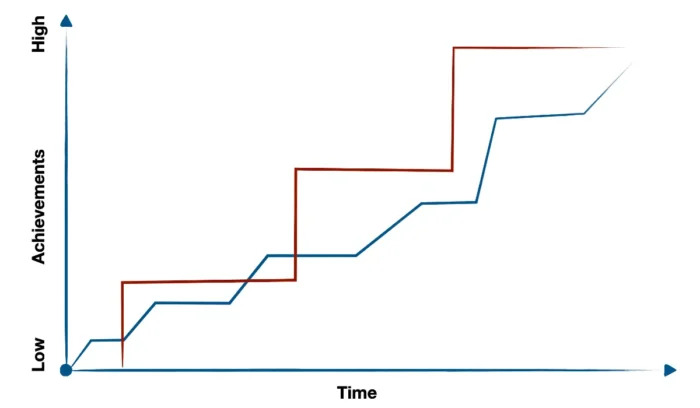
Your process to manage change initiatives will enable you to quickly see the progress you make with each implementation process. You can quickly find all possible “bottlenecks” that are dangerous for the process and quickly eliminate them. In such a way, you can improve the implementation in the “improve as you go” style. That’s a very big imperative for every entrepreneur.
When you work according to previously defined procedures for managing change, you can see possible improvements for the future. Because of that, you will always have a better process in the next organizational change cycle. That’s something called continuous improvement.
You don’t need too much time to define your process for managing changes for the entire organization. But you must follow and improve it whenever you work on implementing change. What you will get is worth your time and effort now when you start defining the process.
Why Are Most Organizational Change Initiatives Unsuccessful?
I don’t want to go into the complexity of the process itself. This is because, according to my experience working with many change processes, that complexity brings fear in managers and entrepreneurs. When you look at the possibilities of a simple implementation process, starting and implementing such a process is much simpler.
For many managers and entrepreneurs, organizational change is something like a nightmare. But, if they are focused on the right things and build an organizational culture where organizational members widely accept changes, the implementation process will be much easier.
There are too many reasons why the organizational change is an unsuccessful process. One of the most important reasons is resistance to change. I have presented 28 different factors that cause resistance to change. They are based on one year of studies and research in that field.
If you have a system that will inform you about sources of changes, check with your case if some of those factors exist and eliminate them before starting the process. You will be halfway to having a really successful project.
But, there are also other challenges that, in many cases, make this process unsuccessful, like lack of resources, cultural barriers, or low support from key stakeholders. We will discuss these challenges later.
What is Organizational Change Management?
Before implementing change effectively, you need to understand what change management is.
Organizational Change Management
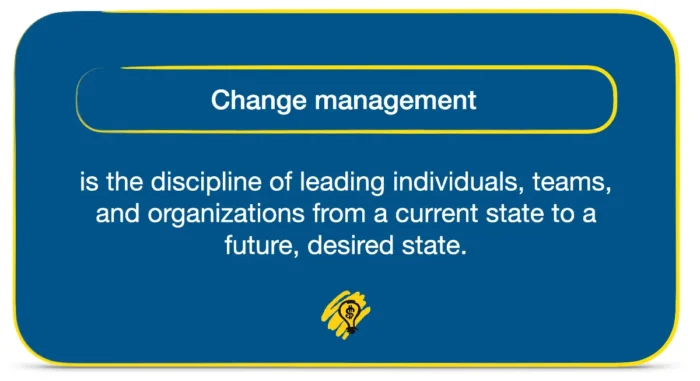
Change management is the discipline of leading individuals, teams, and organizations from a current state to a future, desired state.
Effective change management requires thoughtful planning and sensitive implementation, and above all, the leadership of change must be committed to and invested in the process.
Every day, when you come to work, you think about possible improvements that you need to implement. That’s the change process. Sometimes, small improvements in a short period of time, and sometimes, big projects in a longer time can have big improvements in your everyday business operations.
When I talk about organizational changes, I think about all possible changes in the organization, not only in your business’s organizational structure and design. You can implement changes in the business processes, cost structures, improvement of the technology, change in sales and marketing processes, etc.
In my personal experience, sometimes I work on several different change processes. Some of them are rapid, with a big impact on the performance of my business, but some of them are smaller everyday improvements. What I need and want is to be able to manage different processes more effectively and find ways to improve the next cycles of similar projects of organizational changes.
The Significance of Effective Organizational Change Management
An effective implementation process will ensure that you will implement a systematic approach when a new change is introduced to the organization. Such a systematic approach will significantly reduce the employees’ stress and resistance that typically follow change.
Types of Organizational Change
Organizational changes can be categorized into several types, each with its unique implications and applications. Understanding the types of organizational change can help you tailor the management processes for better outcomes.
Generally, the most common types of organizational change are:
- Transformational change is a more drastic change. Such changes are significant organizational changes because they involve transforming the company’s core values, beliefs, and culture. For these changes, it is important to have strong leadership in place.
- Adaptive change is smaller, continuous improvements that are made to achieve goals from the organization’s business strategies or as a response to market trends or new technologies. Adaptive change usually helps your organization stay competitive and improve its overall performance.
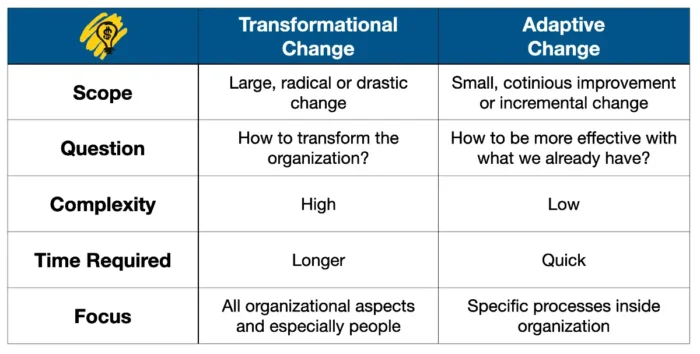
There are also other types of organizational change like the following:
- Strategic change means modifying your company’s overall goals and purpose and implementing new business models or missions of your organization.
- Structural changes are changing the organizational hierarchy, job roles, and a company’s structure to improve efficiency, communication, and adaptability.
- Process changes, also called operational changes, focus on improving and simplifying operational processes to increase productivity, reduce costs, and improve quality.
- Cultural changes transform the workplace culture to align with new values, behaviors, and attitudes. These changes enable innovation, collaboration, and a positive work environment.
- Technological changes usually mean adopting new technology to improve efficiency and stay competitive in the market. For example, implementing new technology can include new equipment, digital transformation initiatives, or any other emerging new technology that will increase productivity and improve the efficiency and effectiveness of your organization.
Each of these types of organizational change requires a different process and business strategies, but they are crucial for staying competitive in the market.
Steps to Implement the Organizational Change
You must implement a systematic approach if you want your organizational change to be effective, ensure a smooth transition, and avoid negative outcomes.
I will break down the process into several stages, guiding you step-by-step based on my 20 years of experience and research in this field to ensure successful change implementation.
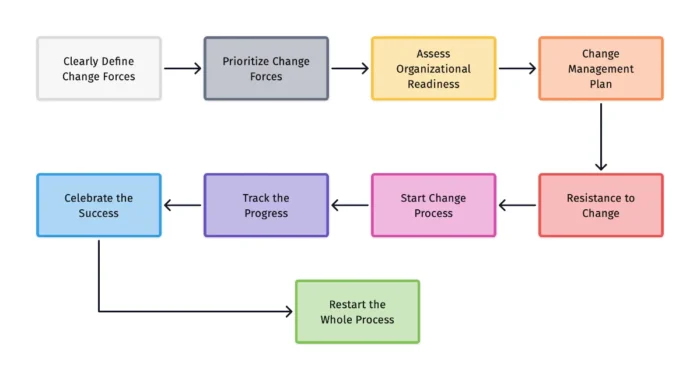
1. Clearly Define the Reasons for Change
To implement an organizational change, you must know that you must change something. So, you must have a system that will enable you to follow all possible sources of organizational changes.
Do you know why you need to change something in your business?
If you don’t know why you need to change, you will probably not change anything in your business.
Each organizational change has some reasons, called change forces. However, the more important thing is that you need to build a system that will tell you to make something in your company.
As we talk about in the 11 warning signs that your business needs to make something, each entrepreneur needs to have more signs that will be followed, and according to them, make something in their business. That something is organizational change.
The first thing you need to do is find all possible change forces that can impact your company.
The most important part of organizational change is knowing what you need to change and when to change something. If you know the right things that must be part of your change management process and at the right time and place, you are halfway to implementing a successful process. Business intelligence as a process is something that can help you in this first step to implement the organizational change.
These forces can be internal or external factors that require the movement of your organization from the current status quo to a new state of organizational prosperity.
2. Prioritize Change Forces
Now that you know what can be changed, you need to start thinking about what factors are more important and what the frequency of those factors will be.
So, you need to choose what type of change forces you will want to follow on an everyday level and what type of change forces you will want to follow on a weekly, monthly, quarterly, or annual level. This classification will depend on the industry or market in which your business operates.
For example, in the high-tech industries, you need to follow more factors more frequently than those not dependent on the change.
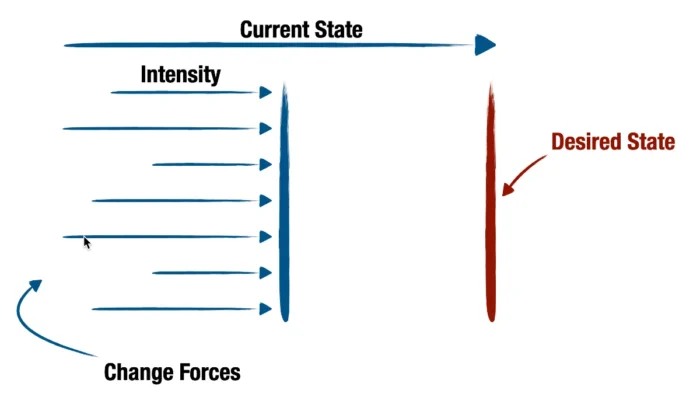
3. Assess Organizational Readiness
When you know that you must do something and have a list of reasons before going into any change initiative, you must assess your organization’s readiness.
How much your organization is ready
Tools and methodologies such as SWOT analysis, stakeholder mapping, or culture assessments will help you measure the levels of preparedness and identify potential challenges. This will really be helpful for the next steps of the process.

4. Develop a Change Management Plan
First, you must develop an organizational change management plan for implementing the process.
A strong change plan starts with a clear vision. This must be followed by developing a change management strategy and creating a structure to execute change management initiatives. Crafting and communicating the strategy is just the beginning. Aligning the organization’s processes, systems, and job roles behind that strategic direction is where the real magic happens.
The implementation plan will be an easy-to-understand roadmap leading you to a successful process. In the plan, you will need to answer the following questions:
- What do you need to change?
- Who are the key stakeholders impacted by the change?
- When do you need to change?
- How will you need to change something?
- Who will be responsible for each step of the process?
5. Resistance to Change
Resistance is a natural part of change. You must locate all possible factors that can cause resistance to change.
In some of the earlier posts, about 28 different factors that cause resistance to change, you can find ideas on where to look for possible sources of resistance. Think about all of them as something that can become part of your change initiatives.
As a part of your change implementation process, you must work on decreasing the influence of possible resistance to change in the process before you start with the implementation.
Before starting the process, you must decrease the influence of the factors that can cause resistance to change. In this way, you can improve the initial plan because you will receive good recommendations from the organizational members, who will resist if they are not included in their proposals.
One of the most typical sources of resistance to change is the fear of the unknown. People often worry about how changes will affect their roles, job security, and daily routines.
To overcome this, you can employ preventive tactics such as transparent communication and involvement in the process to lower the possibility of employee resistance when you start with the implementation. Sharing the vision, the reasons behind the change, expected benefits, and detailed plans can reduce fears and build trust.
Another source of resistance is the perceived loss of control. When changes are imposed without input from those affected, it can increase resistance. A participatory approach, where employees have a voice in this process, can balance this. Gathering feedback, involving employees in decision-making, and creating change champions within your workforce are strategies that can transform resistance into engagement. You can also use training programs where critical staff will learn about the reasons for and benefits of the change.
Effective communication lies at the heart of any organizational change. It’s about what you communicate and when and how you say it.
One thing that remains constant in each change is resistance to change.
The fact is that you will have people who will resist the change. That’s very dangerous for your company and the whole implementation process.
You need known sources of resistance to change and predict who will resist and who will support the process. When you find possible resistance and define the persons who will probably resist the change, you must try to eliminate the resistance before starting the process.
6. Start Your Process
This step will require you to start implementing the process.
When you finish overcoming resistance, you can start the implementation process. Go through all planned activities from step two, or update your plan after implementing strategies for overcoming resistance to change.
7. Track the Progress of the Implementation
This process doesn’t end with implementation. You must track progress and implement tweaking strategies as necessary for successful change. This is critical for ensuring that the change sticks and delivers the desired outcomes.
Measuring key performance indicators is important in the process. It is important because you will see how the implementation influences overall business performance. If something doesn’t go as planned, change it or include it in the next step.
Here is how you can measure business plan implementation results.
8. Celebrate the Successful Implementation
This is an easy and simple step in the process, but most times, it is forgotten by managers.
Why do you need this step?
If the organizational change management project is successful, and you celebrate the success with your employees, the motivation and readiness for another transformation process will be much greater.
9. Restart the Whole Process Again
The final step is the beginning of your company’s new process. Managing organizational change is not something that will start and finish. As I explained at the beginning of this post, change is the only constant in business today. So, after finishing the first process, you will need to start with the second.
Remember that successful change management is not a linear process but cyclic.
Unexpected Challenges in Change Management
We have already covered expected challenges like resistance to change, but understanding other challenges is important in overcoming them. Change management comes with challenges, and we will address some of them:
Lack of Resources or Expertise
A lack of resources can break even the most carefully planned process.
This issue can limit the progress and ability to implement any planned changes within an organization successfully. When financial, human, or technological resources are scarce or inadequately allocated, the implementation of change will suffer. So, it is really important to ensure the support of upper management regarding the availability and the right allocation of resources.
Cultural Barriers
Every organization has its unique culture, and it can have a significant impact on change management.
Organizational culture contains the shared values, beliefs, and norms that guide behavior within a company. When implementing change, these aspects can act as invisible walls, resisting new initiatives that don’t align with the current culture. To make change happen, you must implement effective leadership, supported by a strong communication strategy, and provide training to current and new employees to ensure full employee engagement in your change effort.
Rapid Changes in Market Conditions
Market dynamics can shift significantly in the time between planning and implementing changes. Such rapid evolutions can cause some aspects of the change management plan to become outdated or necessitate additional modifications to ensure the change remains relevant and beneficial.
Integration of New Technology
Integrating new technology, while often a key component of organizational change, can present technical compatibility issues, unforeseen costs, and user adaptability challenges.
Conclusion
As we conclude this extensive guide, I always support the idea that managing change enables your organization to successfully implement the transformation process.
Change is not the enemy of success but rather its stimulus. By incorporating the key elements and business practices in this guide, change managers and leaders can master the art of organizational change, turning their future visions into the reality of their present-day operations.

